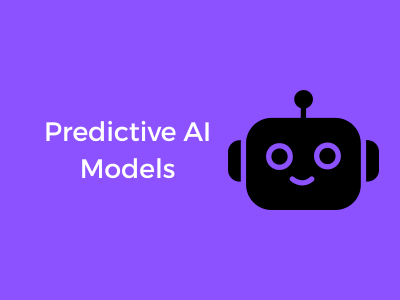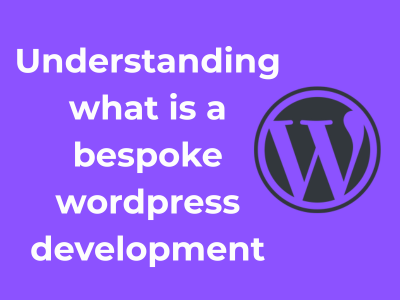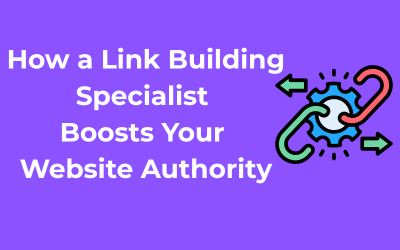Predictive AI might sound like something out of a science fiction novel, but it’s actually a very accessible and revolutionary tool that is shaping how businesses connect with their customers. Let’s break it down in a simple, relatable way so you can see how it powers personalization in ways we couldn’t have imagined just a decade ago.
What is Predictive AI?
At its core, predictive AI is all about using data and algorithms to forecast future actions or behaviors. Think of it as your very own crystal ball powered by advanced mathematics and machine learning. Instead of just reacting to what your customers have done in the past, predictive AI enables businesses to anticipate what they will likely do next. Isn’t that amazing? This foresight allows companies to tailor unique experiences to each individual, meaning no more one-size-fits-all interactions.

Why is Predictive AI Perfect for Personalization?
Here’s the thing: personalization is everything in today’s world. Customers expect to feel understood, valued, and catered to as individuals. Predictive AI makes this possible by analyzing historical data trends and identifying hidden patterns. Imagine scrolling through a streaming platform, and voilà—exactly the movie you’ve been craving pops up in the recommendations. That magic trick? You guessed it—predictive AI in action. Sounds empowering, right?
- It ensures customers see content, products, or services they’re genuinely interested in.
- It saves time for customers by cutting out irrelevant options.
- It strengthens the connection between a brand and its audience through tailored experiences.
In short, predictive AI helps businesses put their best foot forward, showing customers the right things at the right time, which not only boosts satisfaction but builds loyalty too.
Breaking It Down: The Key Ingredients
Now you may be wondering, “How does it actually work?” Let me simplify this for you! Predictive AI operates on three main building blocks:
- Data: It all starts with rich customer data. This includes purchase history, browsing habits, preferences, and even feedback.
- Algorithms: Sophisticated models crunch this data to detect recurring trends and patterns.
- Actionable Insights: Finally, the system predicts what the customer might want or need next—and suggests or delivers it in real time.
You don’t need to be a data scientist to tap into the benefits of predictive AI—many platforms and tools have built-in setups to make this kind of personalization easier than ever. Businesses simply need to tap into these systems and let the data tell its story.
Why Should Businesses Care?
Let’s face it—competition is fierce. Customers have more choices than ever before, and they won’t hesitate to move on if a brand doesn’t meet their expectations. Predictive AI ensures businesses stay ahead of the curve by anticipating customer needs before they even voice them. It puts businesses on the same wavelength as their customers, which is what modern personalization is all about.
So, if you’re running a business or simply curious about how tech is shaping the world we interact with every day, predictive AI is your ticket to creating meaningful, customer-centered experiences that are both impactful and memorable. Plus, it adds a sprinkle of futuristic charm to how we connect!
The Role of Data Patterns in Crafting Exceptional User Experiences
Let’s talk about one of the most exciting aspects of modern AI-driven technologies: data patterns! Now, before you roll your eyes, hear me out. While it may sound technical, data patterns are essentially stories hidden within numbers. When used effectively, they can lead to user experiences so seamless and intuitive that your customers feel like your service was made just for them. Sounds magical, right? Let’s break it down in a way that feels less intimidating and way more practical.

What Are Data Patterns and Why Should You Care?
Data patterns are trends or recurring behaviors hidden in the huge volumes of data collected from users’ interactions with your business. Think about it: every click, purchase, and browsing session leaves behind a digital footprint. These footprints help us uncover valuable insights into user preferences, habits, and expectations.
When businesses recognize these patterns, they can identify what works and what doesn’t for their audiences. The ultimate goal? Tailoring user experiences that feel personal and relevant to each individual user.
Why Do Data Patterns Matter for Exceptional User Experiences?
Imagine walking into a store and having the staff anticipate exactly what you’re looking for. This is the virtual equivalent of what data patterns allow organizations to do.
Here’s how they can make all the difference:
- Personalization at Scale: Data patterns help predict what individual customers are likely to want or need. This means companies can recommend the perfect product or service without a guessing game.
- Efficiency: Identifying patterns reduces noise and redundancy. Instead of bombarding users with irrelevant ads or emails, businesses can deliver precisely what customers are looking for, saving time for both sides.
- Boosting Engagement: Customers are far more likely to interact when a platform or service “gets” them. Understanding data patterns ensures businesses speak their customers’ language (figuratively, of course!).
How to Identify Key Data Patterns
When working with data, it’s essential not to get overwhelmed. Here’s some advice for starting strong:
- Focus on the Metrics That Matter: Not all data is useful. Hone in on key performance indicators (KPIs) like retention rates, click-through rates, or average purchase values that align with your business’s goals.
- Leverage User Behavior Analytics: Look at how users interact with your website or services. Are there patterns in when or how they make purchases? Pay attention to recurring behaviors.
- Segment Your Audience: Break your customers into groups based on similarities (e.g., recurring buyers, first-time users, or seasonal shoppers). Patterns become clearer when data is well-organized.
How Predictive AI Anticipates Individual Customer Preferences
Predictive AI is like having a crystal ball for understanding what your customers want before they actually tell you. Magical, right? It’s a sophisticated mix of data, algorithms, and insights working behind the scenes to align your products or services with the exact preferences of your customers. Let’s take a tour of how this works in action and why it’s such a game-changer for personalizing the customer journey.
1. Mining the Data Goldmine
First things first, predictive AI thrives on data – and lots of it. Every action a customer takes, whether it’s clicking on a product, lingering on a webpage, or making a purchase, leaves behind a trail of valuable data points. Not only that, customer behaviors like browsing history, past purchases, or email interactions all contribute to forming a rich tapestry of insights.
Here’s the kicker: predictive AI doesn’t just passively observe. Instead, it dives deep into identifying patterns in this data to uncover behavioral trends. By doing so, it sets the foundation for incredibly personalized experiences tailored to specific preferences.
2. Spotting Patterns and Making Predictions
Now, this is where the magic happens. Predictive AI uses advanced machine learning algorithms to analyze historical data. Let’s say you’re a frequent buyer of eco-friendly skincare products. The model recognizes this trend and “anticipates” that you’ll likely prefer similar products in the future—automatically lining up the perfect suggestions.
- Segmentation on steroids: Beyond broad categories, predictive AI can group “similar” customers together in highly-specific ways, honing in on their shared preferences. You’re no longer part of a generic audience; you’re an individual with tailored suggestions.
- Behavioral forecasting: It doesn’t just guess one-time preferences. Predictive AI evolves with customer behavior, learning and improving its recommendations over time.
3. Real-Time Personalization: The Power of Being Relevant
One of the coolest abilities of predictive AI? It can work its magic in real-time. Imagine browsing an e-commerce site, and voila! The moment you start exploring new styles of hats, the site begins recommending scarves that perfectly match. That’s predictive AI anticipating your taste in the moment, adapting in a way that feels seamless and intuitive.
- Email campaigns: Your emails don’t have to be boring, one-size-fits-all blasts. Predictive AI makes it possible to send personalized offers or updates relevant to individual customers’ needs, boosting open and click-through rates.
- Dynamic content: AI-powered platforms can personalize website layouts, featured products, or even blog content, tailored in real-time to suit the user.
4. The Competitive Edge: Customers Who Feel Heard
Here’s the bottom line: customers love to feel understood. When businesses proactively meet their needs—without them explicitly saying a word—it builds trust and loyalty like nothing else. Predictive AI enables companies to step into their customers’ world, delivering value before the customer even thinks to ask for it.
So, whether it’s creating hyper-relevant product recommendations, anticipating future needs, or just building an emotional connection through thoughtful interactions, predictive AI gives businesses a clear competitive advantage. It’s no longer just about selling; it’s about engaging at a deeper, more personal level. Who wouldn’t want to stick around for that kind of service?
Exploring Practical Applications Across Industries
Predictive AI isn’t just some futuristic marvel; it’s already making waves across industries you encounter daily. Its power lies in its ability to anticipate needs, uncover opportunities, and enhance decision-making processes. Let’s take a fun and informative dive into how different industries are leveraging predictive AI to personalize customer journeys and elevate experiences!
1. Retail and E-commerce: Elevating Customer Delight
Ever wondered how your favorite online store seems to know what you might want next? That’s predictive AI at play! By analyzing browsing habits, purchase history, and even abandoned carts, these systems suggest products tailored just for you. The result? A more personalized shopping experience that makes you feel like they “get you.”
- Dynamic pricing: AI adjusts prices in real time based on demand, competition, or even customer behavior patterns.
- Product recommendations: Platforms like Amazon thrive on suggesting just the right mix of items — everything from “customers also bought” to curated deals.
2. Healthcare: Enhancing Patient Care
In healthcare, personalization can be life-saving. Predictive AI tools help healthcare providers anticipate patient needs, spot early warning signs of medical issues, and create customized treatment plans based on historical and real-time data.
- Predicting health risks: AI analyzes patient data to foresee risks like diabetes or heart disease and recommend preventive steps.
- Appointment management: Healthcare systems can use AI to predict when patients are likely to miss appointments, allowing staff to follow up proactively.
The outcome is a system geared toward proactive rather than reactive healthcare, making things smoother for patients and providers alike.
3. Finance: Smarter Money Management
The world of finance isn’t just numbers and spreadsheets anymore. Predictive AI is revolutionizing how banks and financial institutions interact with their customers.
- Fraud detection: AI scans millions of transactions to flag suspicious activities, protecting customer funds before issues arise.
- Personalized budgeting tips: Many modern banking apps offer tailored advice on saving and investing based on spending habits.
This makes managing finances less daunting and more secure, empowering customers with insights that matter.
4. Travel and Hospitality: Creating Memorable Experiences
Whether planning a trip or staying at a hotel, predictive AI ensures every aspect of the journey is delightful. From suggesting destinations to forecasting weather, it’s all about making travel stress-free.
- Tailored offers: Airlines and hotels present discounts and packages based on previous bookings.
- Improved customer service: AI chatbots understand traveler preferences and respond with personalized solutions, creating a smoother experience.
Imagine arriving at your vacation spot and having everything you need already waiting for you — it’s like magic, powered by AI!
5. Entertainment: Curating Content, Just for You
Streaming services like Netflix and Spotify wouldn’t be the same without predictive AI. By analyzing your viewing or listening patterns, they suggest shows, movies, or playlists tailored to your tastes.
- Content discovery: Predictive models introduce you to hidden gems you might have missed otherwise.
- Real-time user insights: Platforms adjust recommendations based on what you interact with – did you skip that song? They know what to avoid next time.
This keeps entertainment engaging, relevant, and never boring. Who doesn’t love a playlist or binge-worthy series that feels made just for them?
Where Will Predictive AI Take Us Next?
From improving convenience and safety to creating unforgettable customer moments, the practical applications of predictive AI are vast and ever-growing. No matter the industry, the aim remains the same: making interactions more personal and impactful. So, whether you’re shopping, traveling, or simply scrolling through your favorite content platform, know that predictive AI is hard at work behind the scenes, crafting experiences that feel tailor-made.
Adopting Privacy-First Approaches While Making Personalized Interactions
Personalizing customer journeys with predictive AI is all the rage these days, but let’s face it—none of it matters if we’re not respecting the delicate issue of *privacy*. Building trust with your audience is foundational, and a privacy-first approach ensures your customers feel secure while enjoying tailored experiences. So, how do we strike the perfect balance between creating those “Wow, it’s like they know me!” moments and staying respectful of privacy? Let’s dive in!
Why Privacy Matters (Spoiler Alert: It’s About Trust!)
Every time a customer interacts with your brand, they’re sharing a bit of themselves with you—whether it’s their preferences, purchase history, or even their location. That’s powerful stuff! But it’s also a major responsibility. Mishandling customer data or coming across as too invasive can quickly erode trust.
Privacy-first practices aren’t just a “nice-to-have” anymore—they’re a *must-have*. Customers today are more aware of their data rights than ever before, thanks to global privacy regulations like the GDPR (General Data Protection Regulation) and CCPA (California Consumer Privacy Act). Plus, showing that you respect their privacy can actually make your brand stand out.
Practical Strategies for a Privacy-First Personalization
If you want to seamlessly weave privacy into your personalization strategy, here are some practical (and friendly!) steps to get you started:
- Transparency Is Key: Be upfront about what data you’re collecting and why. Write it in customer-friendly language, not confusing legal jargon. Pop-ups or banners explaining the value of sharing their data can go a long way toward building trust.
- Give Customers Control: Create user-friendly ways for people to manage their data preferences. Allow them to opt-in or opt-out of personalized recommendations or offer granular choices, like sharing location data only for specific situations.
- Use Anonymized Data: Whenever possible, rely on anonymized or aggregated data to make personalization less intrusive. This way, you can still deliver those tailored experiences without needing to know every last detail about someone.
- Minimize Data Collection: Remember, less is more. Instead of collecting every possible piece of data, focus only on what’s essential for enhancing the customer experience. This also helps reduce the risk of a breach!
- Regular Security Audits: Invest in robust security measures and perform regular audits to protect your customers’ data. Communicate this commitment to security—it’s a great way to reassure users!
Let AI Be Smart AND Respectful
Predictive AI tools are pretty amazing, but you can go one step further to make them privacy-conscious. For example, consider using AI models that prioritize local processing (like on-device computing) to avoid sending data to external servers. This not only speeds things up but also keeps customer data safer. Pairing innovative AI with respectful design is a win-win!
The Endgame: Building Relationships, Not Breaking Boundaries
Ultimately, adopting a privacy-first mindset isn’t about limiting creativity—it’s about using personalization as an opportunity to deepen relationships with your customers. By showing that you care just as much about protecting their information as you do about creating “wow” experiences, you’ll be building loyalty that lasts.
So go ahead—leverage predictive AI to personalize your customer journeys, but always keep privacy top of mind. When done right, it’s not just about providing value; it’s about earning trust and cultivating connections. And isn’t that what every successful brand dreams of?
Integration Tips: Combining Today’s Platforms with Predictive AI Tools
Integrating predictive AI into your existing systems might sound like a daunting task, but the good news is it doesn’t have to be! Whether you’re running an e-commerce website, a CRM system, or a personalized app, blending modern platforms with AI magic is easier than you’d think. Here’s your friendly, step-by-step guide to get started and maximize the benefits while keeping things stress-free.
1. Start with a Clear Goal
Before diving into integration, ask yourself, “What do I want to accomplish with predictive AI?” Are you looking to improve product recommendations, fine-tune email campaigns, or enhance customer service chatbots? Having a clear purpose will help guide decisions around which AI tools to choose and how to implement them into your current system seamlessly.
2. Evaluate Compatibility with Your Platforms
Not all predictive AI tools fit every platform like a glove—some play better with certain tech stacks than others. Take a good look at your current systems, whether it’s Shopify, Salesforce, or custom-built software, and assess what integrations are supported. Most modern AI services, like Google AI or AWS AI tools, offer APIs and plugins designed to integrate smoothly with existing platforms. Look for documentation and ensure you won’t face major compatibility headaches down the line.
3. Leverage Data Where It Matters
Predictive AI is only as smart as the data it gets. So, you’ll want to choose the datasets that have the most potential to drive meaningful insights. For instance:
- Use purchase histories for personalized product suggestions.
- Analyze website behavior to predict abandonment points.
- Combine past interactions to recommend targeted resolutions via customer service tools.
Integrations should focus on pulling this data into the AI system so it can work its magic and deliver value for both your business and your users.
4. Collaborate Closely with Your Tech Team
Here’s a fun fact: integration isn’t just about the tools. Your tech team is your secret weapon in ensuring everything works smoothly. When you bring predictive AI into the mix, make them part of the process. From testing connections between systems to troubleshooting hiccups, a collaborative approach will save you time, money, and frustration.
5. Test Small, Scale Big
Dive in with smaller pilot projects before rolling out predictive AI across the board. For example, start by implementing personalized email subject lines using predictive models. Once the process is polished and yielding results, extend the AI tools to entire customer journeys. This phased approach minimizes risk while building confidence in the integration’s success.
6. Keep Optimizing as You Go
AI thrives on continuous learning—so should your integration process! After launching predictive AI tools, track their performance closely using analytics dashboards. Are customers responding positively? Is there lag affecting the platform’s efficiency? Regular feedback loops will help you refine and optimize over time.
7. Prioritize Customer Experience at Every Step
Your ultimate goal should always be to make your customers’ lives better, not more complicated. Keep their journey in mind when implementing AI integrations to avoid overloading them with suggestions or creating experiences that feel intrusive. Aim for smooth, natural, and respectful interactions that elevate satisfaction.
Overcoming Common Challenges Without Compromising User Experience
Let’s face it—adopting predictive AI to deliver personalized customer journeys is exciting, but it’s not without its hurdles. However, with the right mindset and some proactive strategies, you can tackle these challenges while keeping user experience (UX) top-notch. Here’s how you can navigate them like a pro.
1. Challenge: Data Quality and Consistency
Poor quality or inconsistent data is often the Achilles’ heel of predictive AI models. A model is only as good as the data fed into it—think of it like cooking: bad ingredients lead to a disappointing meal.
Solution: Build a solid data strategy. Regularly clean, manage, and audit your data to detect inaccuracies or outdated entries. Incorporate data validation tools, and make sure to centralize your data sources for a unified view. When your data is reliable, your AI models can truly shine.
2. Challenge: Balancing Personalization and Privacy
No one likes to feel like they’re being watched! Customers want tailored experiences, but crossing the line into creepiness can alienate them.
Solution: Practice transparency. Let customers know how their data is being used and the value they’ll get in return. Adopt a “privacy-first” approach by keeping personalization contextual rather than invasive. For instance, suggest a product based on a viewed category rather than detailed past behavior.
3. Challenge: Avoiding Over-Optimization
Yes, AI is powerful, but it’s not infallible. Over-optimization—relying on AI alone without room for human judgment—can lead to robotic, uninspired interactions.
Solution: Marry automation with human intuition. Allow predictive AI to do the heavy lifting (like identifying trends or predicting customer needs), but leave room for creative, human-led strategies. This blend ensures personalization remains dynamic and empathetic.
4. Challenge: Tech Integration Woes
Fitting predictive AI into existing systems can feel like trying to assemble a jigsaw puzzle—with mismatched pieces.
Solution: Choose tools that are built for compatibility. Opt for platforms with open APIs and robust integration support. Collaborate with IT and data teams to anticipate potential roadblocks early on. This upfront effort will save frustrations down the line.
5. Challenge: Measuring Personalization ROI
How do you know that your predictive AI is actually improving the customer journey? Without tangible results, it’s hard to justify your investment.
Solution: Identify key performance indicators (KPIs) that align with your personalization goals. Metrics like customer satisfaction, increased engagement, conversion rate, or average order value can help gauge your ROI. Regularly evaluate these metrics to tweak your approach and maximize outcomes.











